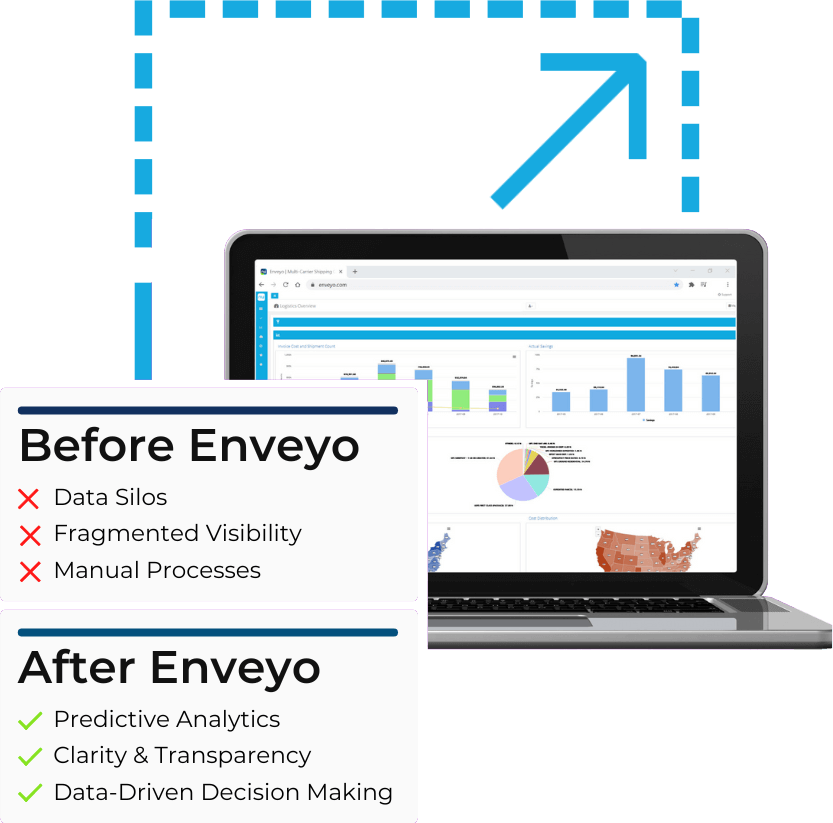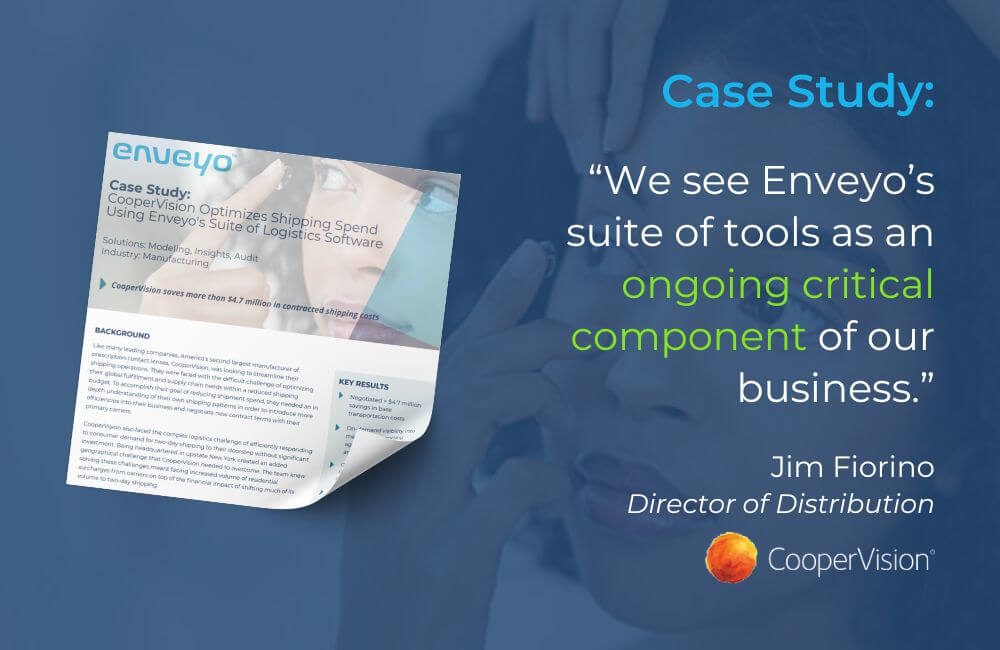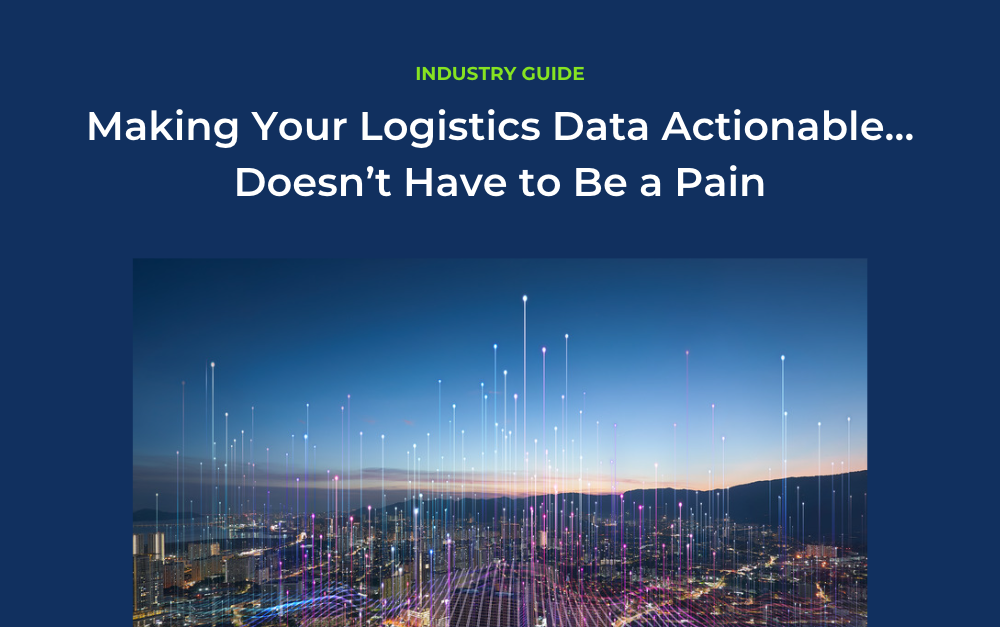In the fast-paced world of logistics, mastering supply chain modeling has become critical for shippers and Third-Party Logistics providers (3PLs) to seamlessly optimize their logistics operations and secure competitive shipping rates with their carriers. With logistics optimization software, businesses are now better equipped than ever to forecast logistics operations with precision, optimizing for both efficiency and cost. This becomes particularly crucial when it comes to carrier contract negotiations, where understanding and leveraging the detailed output of your logistics modeling can make a substantial difference in the terms and costs of shipping contracts.
It’s not just about having the data to execute your model; it’s about using the modeling output strategically to negotiate better with logistics service providers and 3PLs, ensuring that every decision is backed by robust logistics forecasting and analysis.
Supply Chain Modeling for Effective Carrier Contract Negotiations
In this blog, we’ll dive into the essentials of supply chain modeling, focusing on how organizations can leverage robust logistics data within a supply chain optimization platform that will power more effective carrier contract negotiations. This includes strategies for building your negotiation strategy, implementing carrier contract negotiations, and maximizing long-term benefits from shipping contract optimization. By understanding the nuances of carrier agreements, carrier costs, and how shipping volume affects your bargaining power, you can navigate through the complexities of logistics planning with confidence. Take full advantage of logistics modeling software to secure the best possible terms and driving a competitive edge in your logistics operations.
Understanding the Essentials of Supply Chain Modeling
Defining Supply Chain Modeling
Supply chain modeling is the process of mapping out and analyzing elements of your supply chain by leveraging comprehensive logistics data and simulating outcomes to potential future scenarios. This includes evaluating how goods, information, and finances flow from suppliers to consumers. By utilizing logistics modeling software, businesses can simulate various scenarios, helping them to identify bottlenecks and optimize outcomes. This strategic approach allows companies to explore different ways to reduce costs, enhance speed, and minimize resource usage in their logistics operations.
Importance in Carrier Contract Negotiations
Understanding the essentials of supply chain modeling is crucial when negotiating carrier contracts. It empowers businesses to scrutinize every aspect of their agreements with carriers like FedEx, UPS, USPS, DHL, or other regional and final mile carriers. This scrutiny includes pricing, service terms, and other contractual details that directly impact shipping costs. Effective supply chain modeling provides a comprehensive view that supports better decision-making, ensuring that businesses aren’t just focusing on rates but also on the broader business relationship and operational efficiencies.
Linking Supply Chain Modeling with Cost Structures
Supply chain modeling directly influences the cost structures within a logistics operation. By comparing different transportation modes, inventory levels, and supplier options through logistics data modeling, businesses can pinpoint the most cost-effective combinations. This not only helps in reducing expenses but also in maintaining a balance between service quality and cost, which is essential for long-term profitability and customer satisfaction. Through detailed models, companies can project the financial impacts of various logistics strategies and choose the one that aligns best with their business objectives and market conditions.

Leveraging Data for Effective Negotiations
When we dive into the details of carrier contract negotiations, one thing becomes crystal clear: data is king. Let’s break down how shippers and 3PLs can use this treasure trove of information to your advantage.
Analyzing Carrier Performance Data
First off, let’s talk about carrier performance data. In today’s dynamic logistics landscape, organizations are supplied with mountains of data, including details on package volume, delivery times, late shipments, various surcharges, and customer satisfaction metrics. By digging into these data sets, we can pinpoint exactly where and why challenges occur. When illustrating concrete instances of where carrier mishaps threw a wrench in your operations, you can effectively negotiate more favorable terms and secure better service. Armed with this data, you can push for stronger guarantees and even penalties if things go awry. Supply chain modeling is all about turning insights into action.
Benchmarking Against Industry Standards
Next up, benchmarking. This is where supply chain modeling plays detective, comparing your processes against the best in the industry. We’re talking delivery accuracy, order fulfillment speed – you name it. By understanding where you stand against industry expectations, you can spot areas ripe for improvement. Logistics modeling software enables you to set the bar. It’s not just about keeping up; it’s about aiming to gain competitive advantage. And with logistics data on your side, you’re not guessing. You’re making strategic moves based on solid evidence.
Identifying Cost-Saving Opportunities
Lastly, let’s not forget the bottom line: cost control. By analyzing robust shipping data, you can uncover ways to cut costs without cutting corners. Maybe it’s switching up shipment methods or catching billing errors before they balloon. It’s like finding money in the couch cushions, but instead of loose change, we’re talking significant savings. And in this dynamic landscape, every penny counts.
Leveraging data isn’t just smart; it’s a game-changer in strategic carrier negotiations. With the right info in hand, you’re negotiating from a position of strength.
Industry guides, white papers and e-Books, for supply chain & logistics leaders.
Navigating Parcel Audits: How Data-Driven Software Solutions Optimize Your Logistics
Dive into the intricacies of parcel auditing, explore tangible benefits of data-backed audits, and learn how to choose the right auditing partner for your needs.
Making Your Logistics Actionable... Doesn't Have to Be a Pain
Today’s dynamic logistics environment is supplying shippers and 3PLs with mountains of data. So, why are so many of them starving for intelligence? Find out how to make your data actionable.
Multi-Carrier Parcel Shipping Strategy: The Ultimate Guide
Uncover key success elements of a multi-carrier parcel shipping strategy and how you can turn the cost of doing business into a competitive advantage.
Building Your Negotiation Strategy
When you’re gearing up for carrier contract negotiation, it’s like prepping for a big game. You need a solid plan that starts with setting clear objectives. What is your ideal outcome? Lower costs, better service terms, or maybe a bit of both? It’s crucial to know your endgame.
Setting Clear Objectives
- Identify Your Goals: Be crystal clear about what you’re after as the outcome of your contract negotiation. Is it reducing shipping rates for your highest-volume package size or getting more flexible delivery options to decrease time in transit? Leverage shipping data to identify areas of priority and document your goals to bring to the negotiating table.
- Understand Your Needs vs. Wants: It’s all about prioritizing. What are your need to haves and what are your nice to haves? If the majority of your shipping is made up of less than 1 lb. packages, you likely want to prioritize a rate reduction of that service segment over all others. Make that distinction early on in the process.
Next up, dive into the data. Leverage your supply chain modeling insights as your playbook. They show you where you can push for savings and where you might need to compromise.
Utilizing Supply Chain Modeling Insights
- Analyze Performance Data: A comprehensive analysis of carrier performance data tells you where your carriers are succeeding for you and where there’s room for improvement. The foundation of your negotiations is shipping data.
- Benchmarking: Set realistic negotiation targets based on where you stand as compared to industry leaders.
- Spot Cost-Saving Opportunities: Hunt for ways to trim the fat without cutting into the muscle. Every penny saved is a penny earned, however customer satisfaction cannot be compromised.
Finally, craft a tailored proposal that fits your goals. This isn’t about throwing numbers at the wall and seeing what sticks. It’s about making offers that make sense for both sides.
Crafting Tailored Proposals Based on Data Analysis
- Leverage Your Data: Share the output of your supply chain modeling analysis. It’s hard to argue with cold, hard facts.
- Highlight Mutual Benefits: Negotiations are two-sided. You need to show how your proposal is a win-win for your financial, fulfillment, and customer satisfaction goals, while also illustrating a beneficial outcome for the carrier.
- Prepare to Pivot: Have a Plan B (and C) as defined by your shipping simulations. Negotiations can take unexpected turns, so be ready to adapt.
Set clear objectives, use your supply chain modeling insights to guide your plan, and make data-driven proposals.
Implementing Carrier Contract Negotiations
Collaborative Negotiation Techniques
When kicking off carrier contract negotiations, it’s all about collaboration and building strong partnerships with your carriers. This means going beyond mere transactions and focusing on creating mutually beneficial relationships. Make it a point to maintain open and transparent communication, setting the stage for honest discussions about expectations and performance. By emphasizing your commitment to a long-term partnership, you’ll often find that carriers are more willing to offer competitive rates, seeing the stage for ongoing business.
Securing Win-Win Agreements
During negotiations, leverage your supply chain modeling insights to ensure you’re getting the best deal possible, down to the penny. This stage involves a lot of back and forth—proposals are exchanged, and bargaining happens. Focus on reaching agreements that not only meet your logistical needs but also offer fair terms to the carriers. Ensure that the Service Level Agreements (SLAs) include clear expectations and penalties for non-compliance, which motivates carriers to uphold high standards of service.
Monitoring and Adjusting Contracts Post-Negotiation
After the ink has dried on the contracts, your job isn’t done. The final stage of the negotiation process involves monitoring the implementation of the agreements and ensuring compliance with the terms set. Stay proactive and use advanced shipping analytics tools to track carrier performance against your KPIs. This ongoing evaluation allows you to identify areas for improvement and initiate discussions for adjustments as necessary, ensuring that your shipping operations continue to run smoothly and efficiently. This continuous improvement process not only helps in maintaining the health of your carrier relationships but also ensures that you’re able to adapt to any changes in market conditions or business needs effectively.
Maximizing Long-Term Benefits
Establishing Continuous Improvement Processes
To ensure long-term success, embrace continuous improvement as part of your culture. It’s all about making small, smart tweaks to logistics processes, always aiming to boost quality and cut waste.
- Set Clear Goals: Lay out what you want to achieve and share those objectives across the team.
- Assess and Analyze: Real-time access to performance and cost data help to see what’s working and what’s not.
- Implement Changes: Small steps, big impact. The ability to adjust when needed ensures steady improvement.
- Measure Success: Seeing real results? That’s your cue to celebrate and plan your next moves for continuous optimization.
Strengthening Carrier Relations
Building solid relationships with your carriers isn’t just nice to have; it’s a must for long-term success. Keep communications clear and your goals aligned.
- Open Dialogue: Regular checks-ins aren’t just about catching up—they’re about catching issues before they become problems.
- Performance Feedback: Share with your carriers how they’re doing by leveraging real-time logistics insights, and listen to shared feedback.
- Strategic Alignment: Establish mutual goals and regularly review progress, aiming for wins on both sides.
Leveraging Technology for Ongoing Optimization
Staying ahead of the competition means staying updated on performance. Leverage the industry’s most robust logistics management software to keep your operations running smoothly and your strategies sharp.
- Real-Time Data Tracking: With tools like shipping analytics software, you can monitor everything in real-time, like package volume by origin and late deliveries, making sure you’re on track to meet internal goals and customer satisfaction benchmarks.
- Advanced Analytics: Perform ongoing supply chain simulations to predict shipment trends and prepare to execute against them efficiently.
- Multi-Carrier Shipping Execution: Leverage a multi-carrier shipping software that enables robust business rules to automatically select the right carrier, service, and rate to optimize the delivery of every package.
By integrating these strategies, you not only streamline operations but also strengthen carrier partnerships and enhance overall supply chain efficiency.
Navigating the complexities of supply chain modeling and carrier contract negotiations can seem daunting at first. However, when leveraging data, embracing technology, and fostering strong partnerships, your logistics operations are primed to run efficiently.
Why Enveyo for supply chain modeling
As you prepare for your next carrier contract negotiation, the importance of shipping simulation, data-backed proposals, and real-time access to performance data to power continuous improvement cannot be overstated. By remaining proactive, adaptable, and data-driven, shippers and 3PLs can not only navigate but thrive amidst the challenges and opportunities presented by the dynamic logistics landscape.
By investing in supply chain modeling tools, you can anticipate demand, optimize services and routes, and proactively address potential disruptions. Failing to harness the power of predictive analytics leaves your team reacting rather than anticipating, impacting overall efficiency.
Read the case study to learn how CooperVision saved over $4 Million in parcel spend with Enveyo's supply chain modeling technology.

Take Your Supply Chain Modeling To The Next Level

Find out how robust shipping simulations set you up for strategic carrier negotiations.
Chat with the Enveyo teamChat with the Enveyo team







